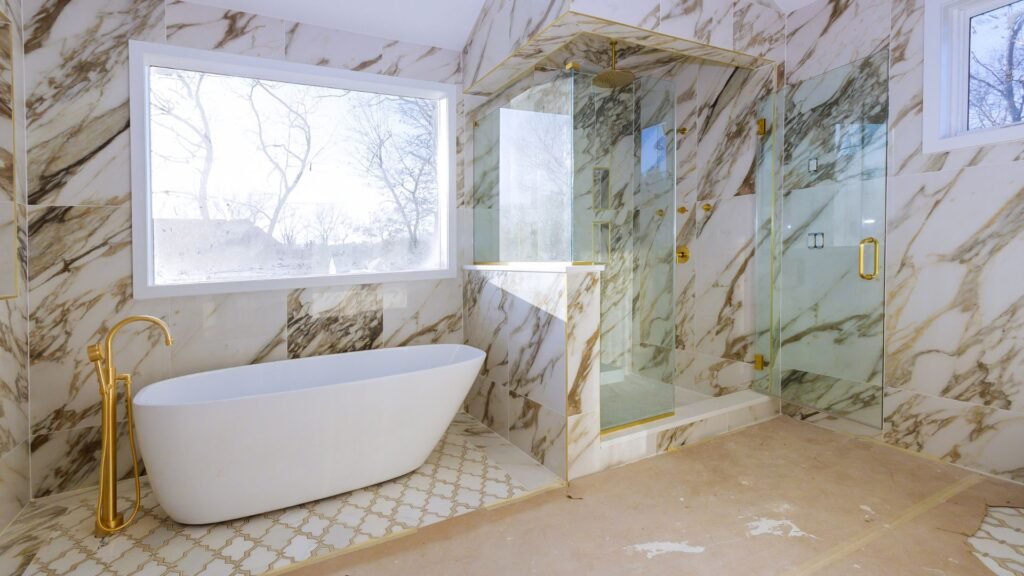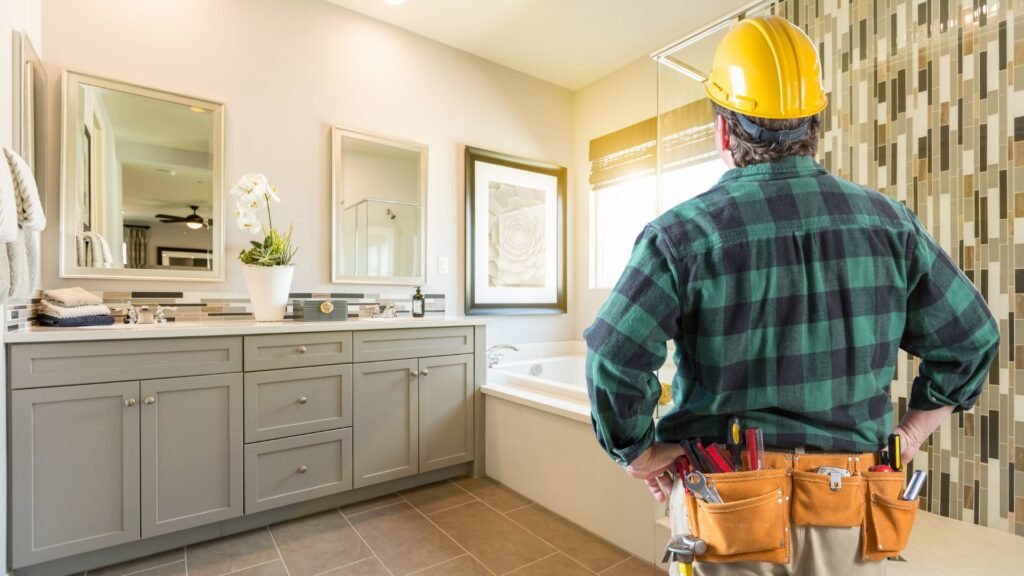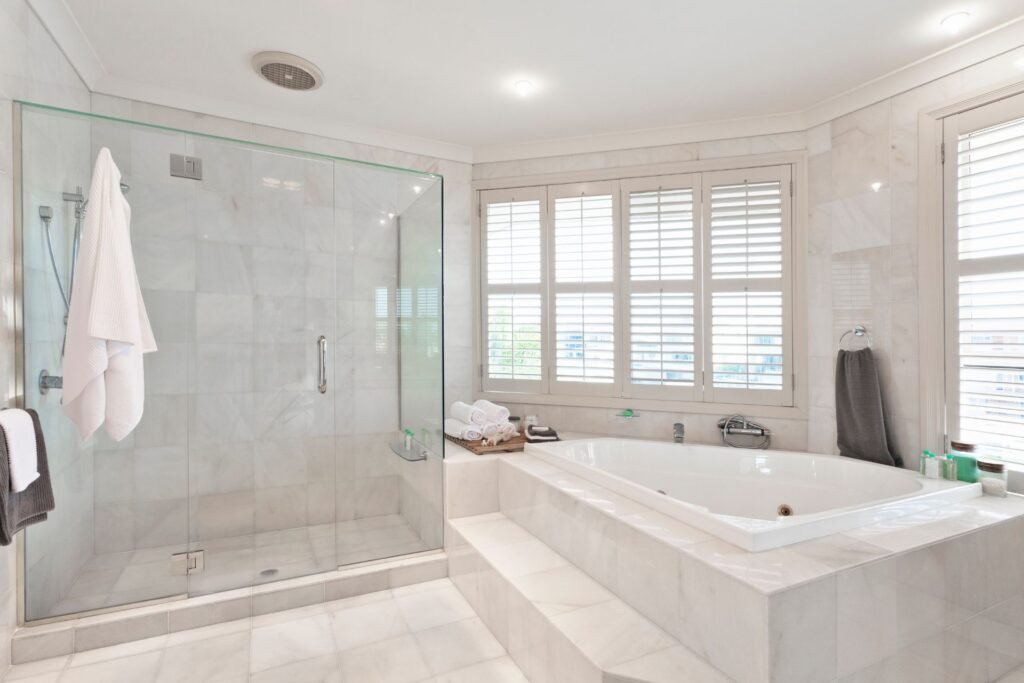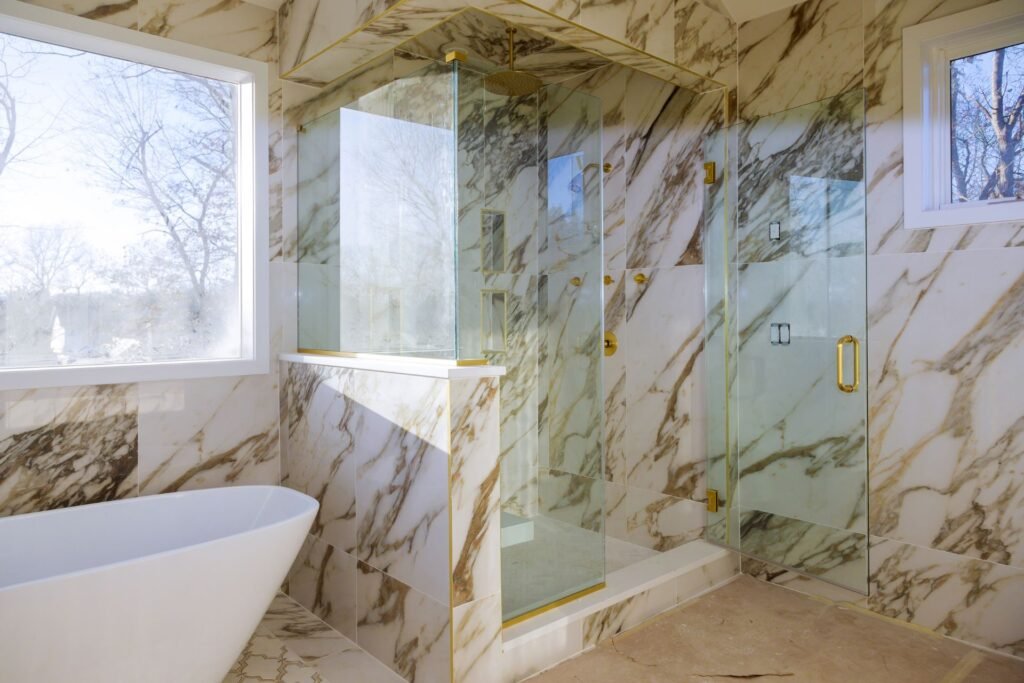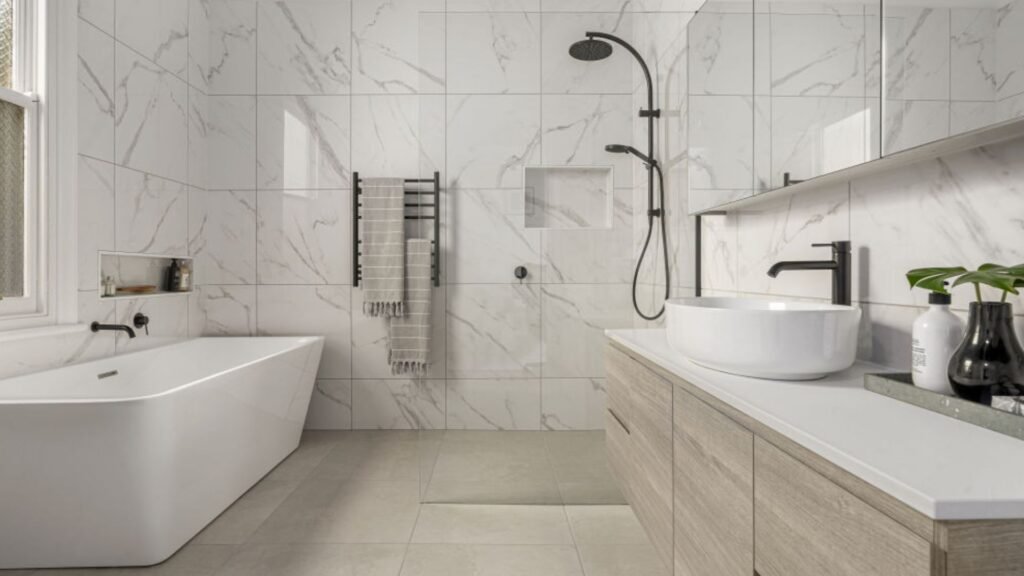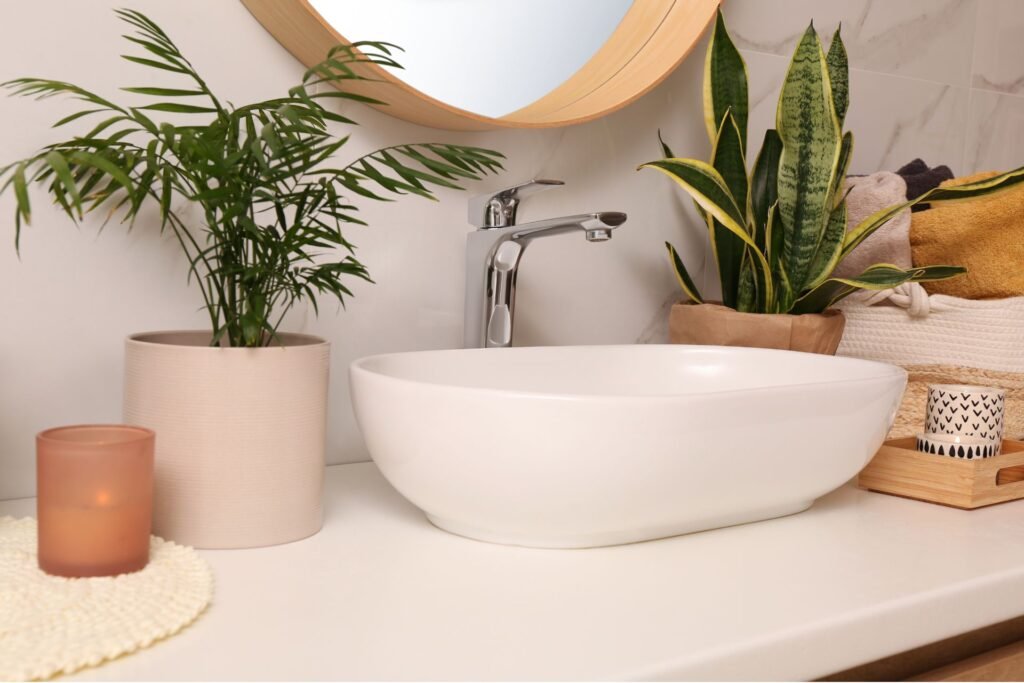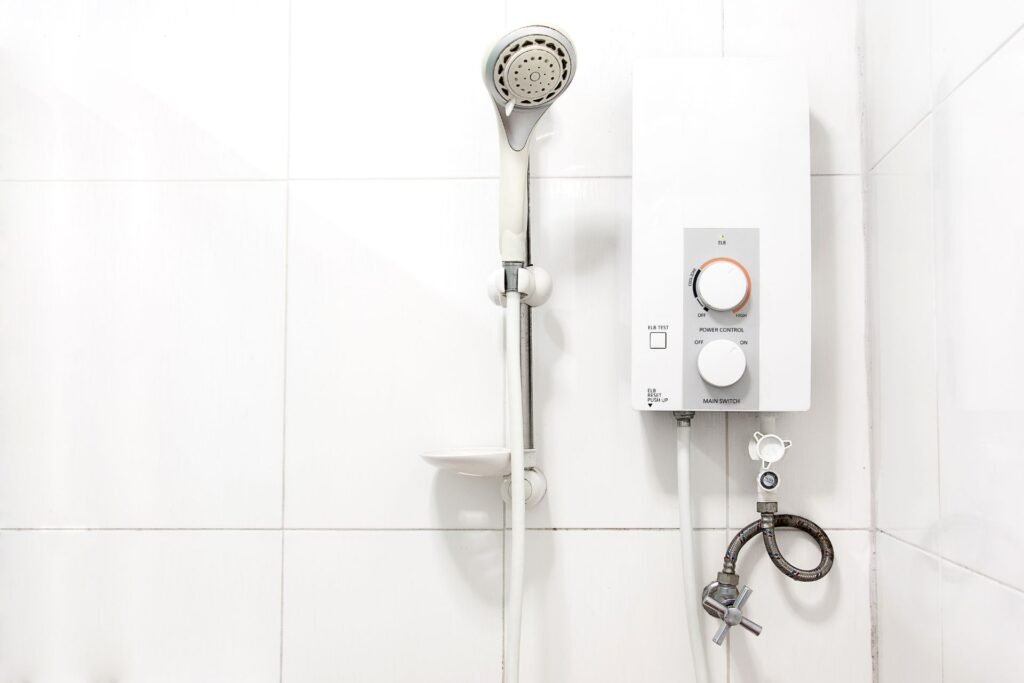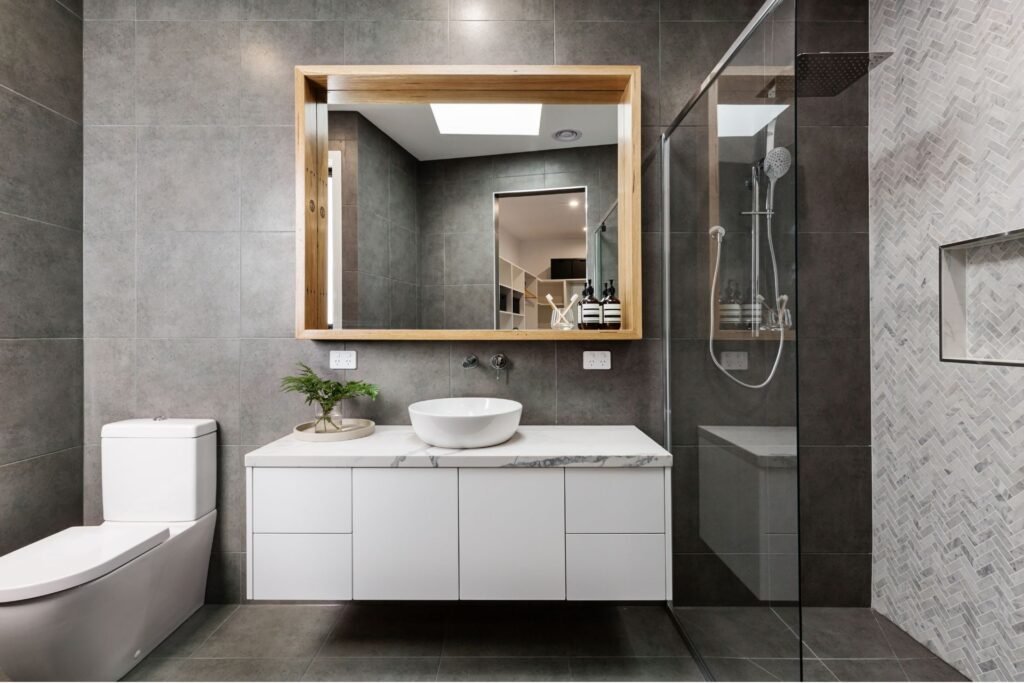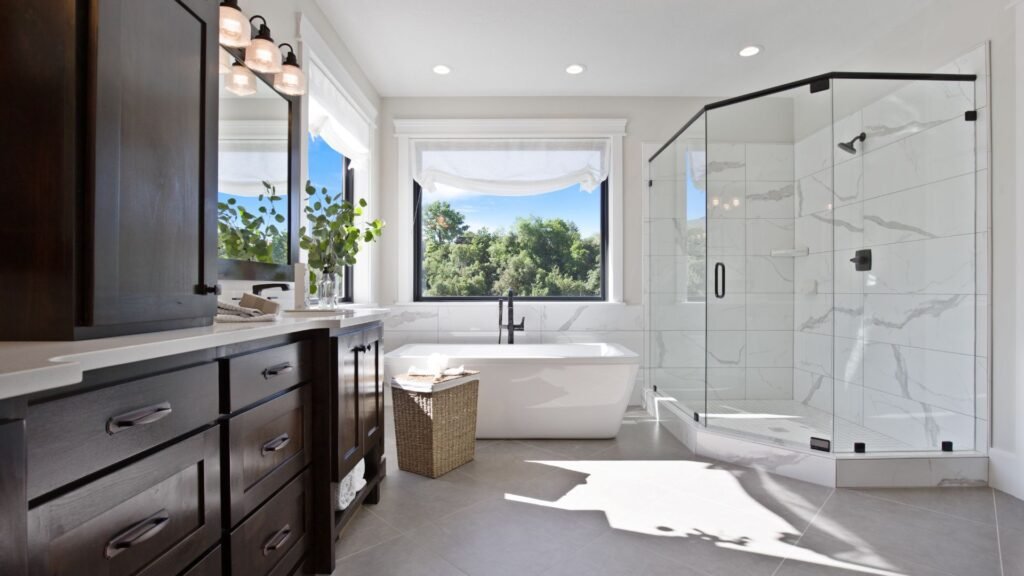Welcome to our step-by-step guide on how to renovate a bathroom in NZ, where we’ll walk you through everything from planning and budgeting to design choices and compliance with local building rules. A bathroom renovation is one of the most rewarding upgrades you can make in your home, adding comfort, style, and value when done right. Whether you’re aiming for a modern, minimalist retreat or a practical family-friendly layout, the key lies in understanding the process, setting realistic expectations, and making informed decisions along the way. This guide will help you navigate costs, permits, hiring the right professionals, and avoiding common mistakes, so you can approach your project with confidence and achieve a result that works for your lifestyle.
To renovate a bathroom in NZ, start by setting a budget and planning your design around function and style. Check if you need council consent for plumbing or structural changes, then hire licensed professionals such as plumbers and electricians. Choose durable fixtures and materials, and follow a clear timeline: demolition, plumbing and electrical work, waterproofing, tiling, and finishing touches. To save money, keep the existing layout, mix high-end and affordable fittings, and DIY small updates like painting or mirrors.
Table of Contents
Understand The Costs Of A Bathroom Renovation In NZ
Renovating a bathroom in New Zealand is a big investment, and understanding the costs upfront helps you avoid financial surprises. On average, a full bathroom renovation in NZ ranges between $15,000 and $30,000, depending on the size of the room, the quality of the materials chosen, and the complexity of the work involved. Smaller updates like replacing fixtures or repainting can fall on the lower end, while luxury finishes or major layout changes often push the project toward the higher end of the budget.
The final cost is shaped by several key factors: materials, tradespeople, and council permits. Materials such as tiles, vanities, showers, and flooring vary widely in price. Choosing standard ceramic tiles is far more affordable than opting for natural stone or custom designs. Tradespeople also make up a large portion of the budget. Licensed plumbers, electricians, tilers, and builders are essential for a compliant and safe renovation, and their rates can differ based on experience and location within NZ. In some cases, council permits are required, particularly when structural changes or plumbing alterations are involved, which adds both time and extra costs to the process.
Another important consideration is whether to take a DIY approach or hire professionals. DIY can save money on simple cosmetic updates such as painting, replacing mirrors, or installing shelving. But for plumbing, electrical, or waterproofing work, hiring licensed professionals is not only a legal requirement in NZ but also the safest option. Attempting to cut corners in these areas can lead to costly mistakes, water damage, or even compliance issues with your local council. The best strategy is often a mix: take on manageable DIY tasks to reduce expenses while leaving technical work to experts who can guarantee quality and compliance.
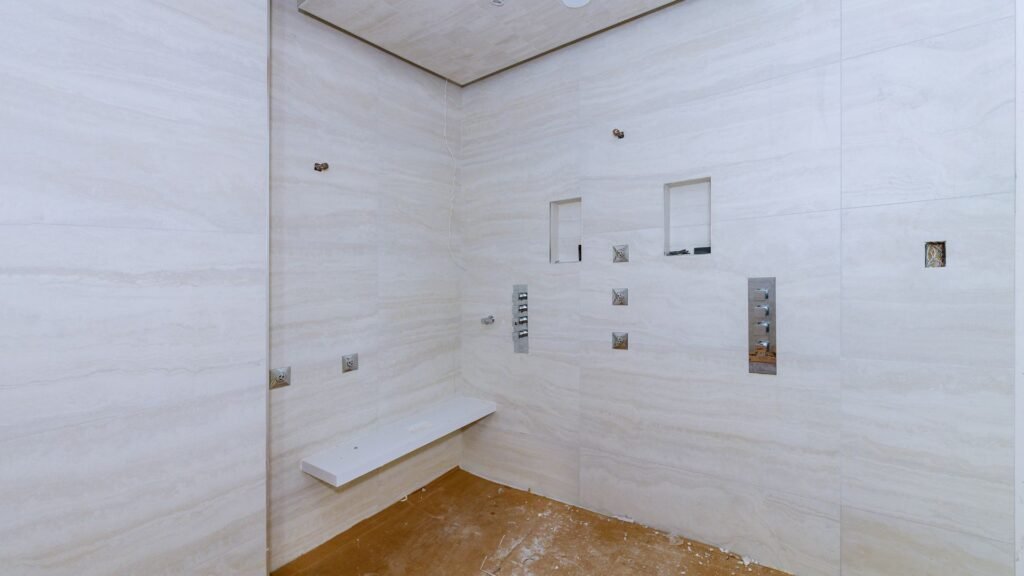
Plan Your Bathroom Design
Planning your bathroom design is one of the most important stages of a renovation. Before choosing tiles or fixtures, take time to think about how the space will function in your daily life. A well-thought-out design not only improves comfort and convenience but also ensures you get the best value from your investment.
- Think about functionality first: layout, storage, and daily use. Consider the practical aspects of your bathroom. Where will the shower, toilet, and vanity sit? Is there enough room for easy movement? Think about who uses the bathroom and how often. For example, a family bathroom might need extra storage for towels and toiletries, while an ensuite may focus on luxury and privacy. Planning for storage with built-in shelving, mirrored cabinets, or under-vanity drawers helps keep the space clutter-free and functional.
- Style choices: modern, classic, or minimalist. Once the layout is clear, you can decide on a style that matches your home and personality. Modern designs often include walk-in showers, floating vanities, and matte finishes. Classic bathrooms may feature freestanding baths, traditional tapware, and elegant tiles. A minimalist style focuses on clean lines, neutral tones, and simplicity. Choosing a consistent design theme ensures your bathroom feels cohesive and timeless.
- Inspiration sources: NZ design trends, magazines, and showrooms. If you are unsure of your preferred style, start by collecting ideas. Visit bathroom showrooms across New Zealand to see fixtures and materials in person. Browse interior design magazines and online galleries for layouts that catch your eye. Keep a folder or mood board of styles, textures, and colors that appeal to you. This will help you and your tradespeople clearly visualize the final look.
- Tools: free online bathroom planners. Many websites offer free bathroom planning tools that let you design a digital layout. These tools allow you to experiment with different arrangements, measure space requirements, and see how fittings might look together. Using a planner can save time, reduce errors, and give you confidence in your design decisions before the renovation begins.
Taking the time to carefully plan your bathroom design ensures that your renovation will not only look great but also function perfectly for your lifestyle. By focusing on layout, style, and inspiration, you set a strong foundation for the rest of the renovation process.
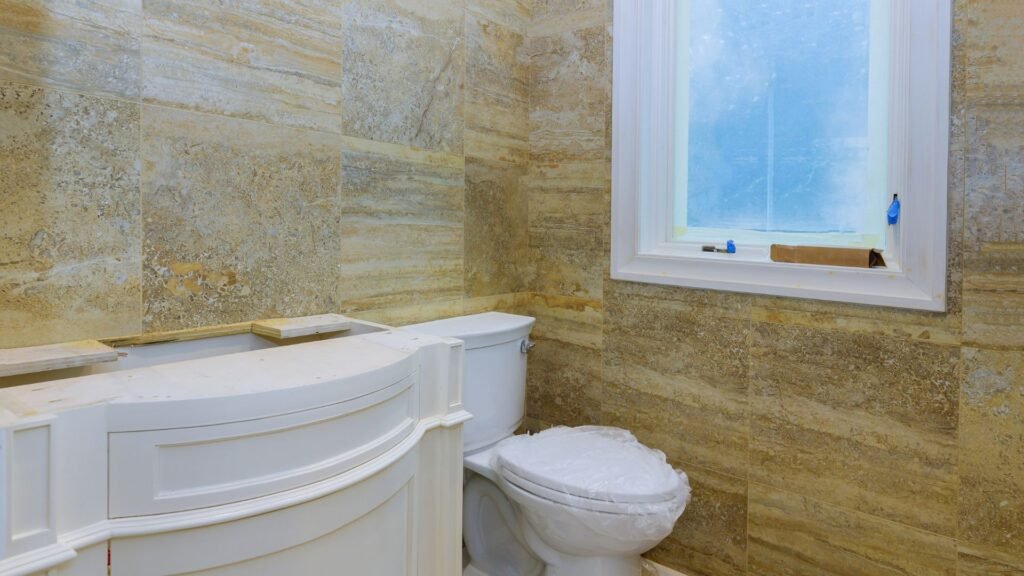
Check Building Codes And Permits In NZ
When renovating a bathroom in New Zealand, it is important to understand the building codes and consent requirements before making any major changes. Bathroom renovations often involve plumbing, electrical work, or structural adjustments, and these areas are closely regulated to ensure safety and compliance with national standards. Ignoring this step can create costly issues later on and may even reduce the value of your home.
Overview Of NZ Building Consent Requirements For Plumbing And Structural Changes
In NZ, any work that alters the structure of your home or affects plumbing systems typically requires a building consent. This includes moving walls, changing the layout of plumbing lines, or replacing showers and toilets with new connections. Even if the change seems minor, such as shifting a sink to another wall, it may fall under regulated work. Electrical upgrades also require a registered electrician, as DIY electrical work is not permitted. The purpose of these rules is to protect homeowners and ensure that all renovations meet the New Zealand Building Code.
How To Apply For Permits Through Your Local Council
Applying for building consent starts with contacting your local council. Each council provides detailed application forms, checklists, and guidelines to help you prepare the necessary documents. These typically include floor plans, proposed layout changes, and specifications for plumbing or electrical work. Once submitted, the council will review your application and may request additional information before granting approval. Processing times can vary, but it is best to apply early to avoid delays in your renovation timeline. Many councils also offer online portals, making the process easier for homeowners and contractors.
Why Cutting Corners On Compliance Can Cost More Later
Skipping consent or trying to bypass regulations might seem like a way to save money, but it often results in greater expenses. Non-compliant work can lead to fines, failed inspections, or the need to redo parts of the renovation. If you decide to sell your property in the future, unapproved bathroom alterations can reduce your home’s market value and complicate the sales process. Worse still, insurance companies may refuse to cover damages caused by work that was completed without the proper permits. Ensuring compliance from the start is the safest and most cost-effective choice.
Checking building codes and permits is not the most exciting part of renovating a bathroom, but it is one of the most important. By following the rules and working with licensed professionals, you can avoid unnecessary stress, protect your investment, and move forward with confidence in your renovation project.
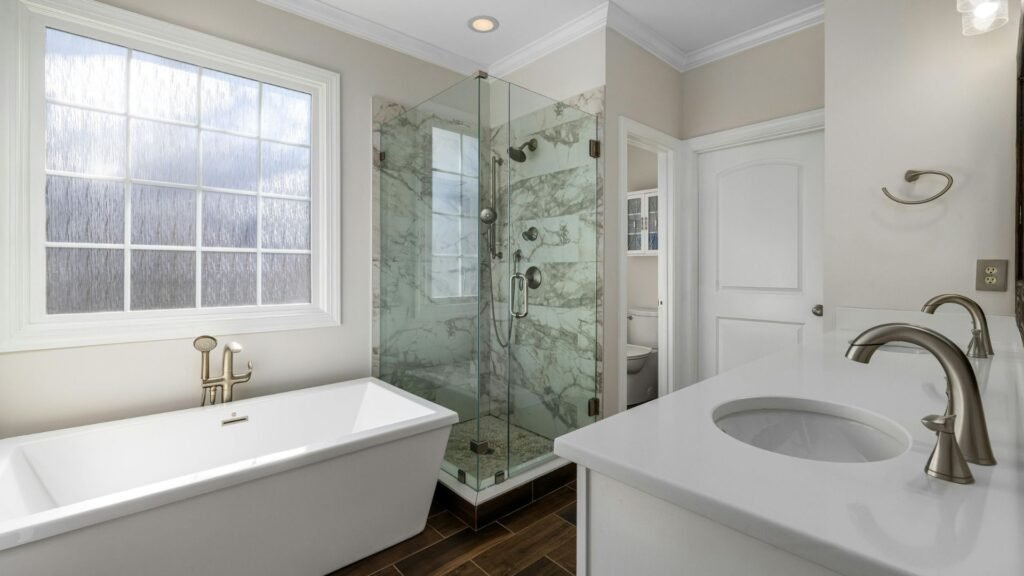
Hire The Right Professionals
Renovating a bathroom in New Zealand is not a one-person job. While you may be able to handle small tasks like painting or adding accessories, the core work requires qualified tradespeople. Hiring the right professionals ensures that your bathroom is safe, compliant with NZ building codes, and built to last. This step is one of the most important parts of the renovation process because mistakes made here can lead to costly repairs in the future.
Key Trades Needed: Plumber, Electrician, Builder, Tiler
A successful bathroom renovation typically involves four key trades. A plumber is essential for installing and relocating sinks, showers, baths, and toilets. An electrician handles the lighting, power outlets, heated towel rails, and underfloor heating. A builder takes care of any structural work such as removing or adjusting walls, installing windows, or reinforcing floors. Finally, a tiler finishes the space with waterproof tiling, ensuring both functionality and style. Each of these roles plays a vital part in the overall project, and missing out on any of them can compromise both quality and compliance.
How To Choose Licensed Professionals In NZ
In New Zealand, it is a legal requirement for plumbing and electrical work to be carried out by licensed tradespeople. When hiring, always check that the professional is registered with the appropriate authority. For plumbers and gasfitters, confirm they are licensed through the Plumbers, Gasfitters, and Drainlayers Board (PGDB). For electricians, look them up on the Electrical Workers Registration Board (EWRB). Builders should be members of recognised organisations such as Licensed Building Practitioners (LBP). Taking the time to verify credentials protects you from liability, ensures safety, and guarantees that your renovation will meet NZ standards.
The Value Of Getting Multiple Quotes
Bathroom renovations are a significant investment, so it pays to get at least three quotes before choosing a contractor. This allows you to compare not only prices but also the scope of work, timeline, and level of detail provided. A comprehensive quote will outline materials, labour costs, and potential extras. Be cautious of quotes that seem unusually low, as they may exclude important details that will later result in hidden costs. By comparing multiple quotes, you gain a clearer picture of the market rate and can make an informed decision that balances affordability with quality.
Red Flags To Watch For When Hiring
When selecting tradespeople, keep an eye out for red flags that may signal trouble ahead. Avoid contractors who refuse to provide proof of licensing or references from past clients. Be wary of those who insist on large upfront payments or cannot give you a written contract. Poor communication, vague pricing, and reluctance to answer questions are also warning signs. Trustworthy professionals will be transparent, responsive, and willing to explain their process. Choosing the wrong person can result in delays, subpar workmanship, and even safety hazards, so it’s better to take time upfront to vet them properly.
Hiring the right professionals in New Zealand is the foundation of a successful bathroom renovation. With licensed and experienced tradespeople on your side, you can ensure that the project runs smoothly, meets legal requirements, and results in a bathroom you’ll enjoy for years to come.
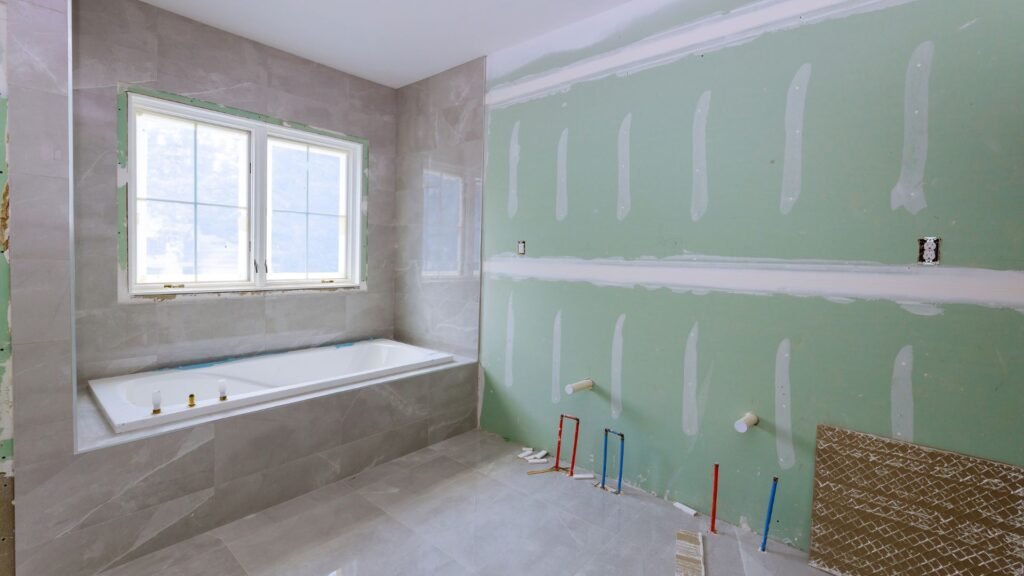
Choose Your Materials And Fixtures
When renovating a bathroom in NZ, one of the most exciting and important stages is selecting the right materials and fixtures. These choices will determine not only how your bathroom looks, but also how it performs and lasts over time. By carefully weighing style, quality, and practicality, you can create a space that suits your lifestyle and budget while meeting local standards.
Tiles, Flooring, Vanities, Showers, Baths
Tiles remain one of the most popular bathroom finishes in NZ because they are durable, easy to clean, and available in a wide range of styles. Porcelain and ceramic tiles are common picks, but many homeowners also explore natural stone for a premium finish. For flooring, vinyl and engineered timber can offer a warmer feel underfoot while still being moisture-resistant.
Vanities come in many forms, from wall-mounted floating options that create an illusion of more space, to traditional floor-standing designs that offer added storage. When it comes to showers and baths, the choice depends on your needs. A walk-in shower can save space and add a sleek, modern look, while a freestanding bath can provide a luxurious focal point for larger bathrooms.
NZ Suppliers Vs. Imported Options
Homeowners in NZ can choose between sourcing products locally or opting for imported options. Local suppliers often provide faster delivery times, easier access to replacement parts, and products designed for New Zealand’s building standards. Imported options, on the other hand, can sometimes offer unique designs and competitive pricing. The key is to balance availability, after-sales support, and compliance with NZ regulations before making a final decision.
Balancing Durability With Design
A bathroom needs to withstand daily use, so durability should always be a top priority. Water resistance, scratch resistance, and long-term wear all matter when choosing fixtures. At the same time, design plays a big role in how comfortable and visually appealing the space feels. Striking the right balance means choosing high-quality products that complement your chosen style without sacrificing performance. For example, a stone-look tile can provide timeless beauty while offering the toughness needed for a wet environment.
Eco-Friendly And Water-Saving Options
Sustainability is becoming increasingly important in New Zealand homes. Opting for eco-friendly fixtures not only reduces your environmental footprint but can also lower utility bills. Low-flow taps, dual flush toilets, and water-efficient showerheads are widely available and meet NZ standards for performance. These features ensure you use less water without compromising on comfort or function, making them a smart choice for long-term savings and responsible living.
Choosing the right materials and fixtures is about blending practicality with personal style. By exploring local suppliers, weighing durability against design, and considering eco-friendly options, you can build a bathroom that looks stunning, functions well, and lasts for years to come.
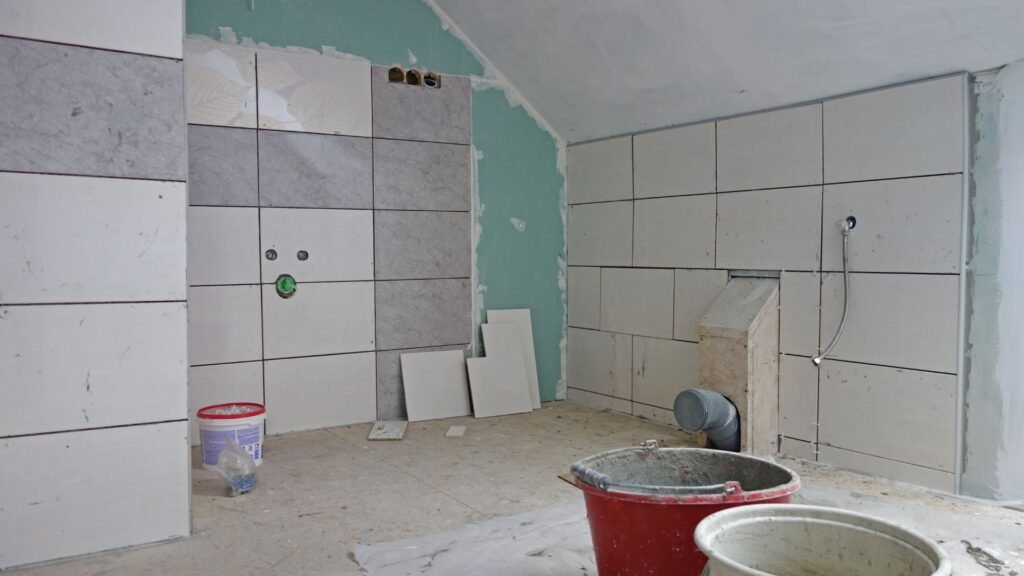
The Renovation Timeline
Renovating a bathroom in New Zealand usually takes around four to six weeks, but the exact timeline can vary depending on the size of the project, the complexity of the design, and the availability of tradespeople. Understanding what happens during each stage helps you prepare for the process and manage your expectations.
- The first stage is demolition: This involves removing old fixtures, fittings, tiles, and sometimes walls or flooring. Demolition can take anywhere from a couple of days to a full week, depending on how much needs to be cleared.
- Next comes plumbing and electrical work: Once the bathroom is stripped back, plumbers and electricians step in to reroute or upgrade pipes, drainage, wiring, and outlets. This step is crucial to ensure compliance with New Zealand building standards and typically takes several days to complete.
- After that, waterproofing is applied: Waterproofing is essential in preventing leaks and long-term water damage. A qualified professional will install waterproof membranes around wet areas, and drying time is needed before tiling begins.
- Tiling and flooring follow: This stage brings your bathroom design to life. Depending on the type and size of tiles chosen, tiling can take several days to a week. Floor installation is usually done around the same time.
- The final step is finishing: This includes installing vanities, showers, baths, mirrors, lighting, and any additional fittings. Once these are in place, the bathroom is cleaned, and any small adjustments are made before it is ready for use.
- Common delays to prepare for: Bathroom renovations can run into unexpected issues such as supply chain delays for fixtures, hidden water damage discovered during demolition, or hold-ups in council consent approvals. Weather conditions can also cause setbacks if exterior plumbing or drainage work is required. Scheduling tradespeople during busy seasons may add extra waiting time, so it pays to plan ahead and confirm bookings early.
A bathroom renovation may feel like a long process, but knowing each stage of the timeline will help you stay organized and avoid stress. By preparing for possible delays and working with experienced professionals, you can ensure the project runs as smoothly as possible.
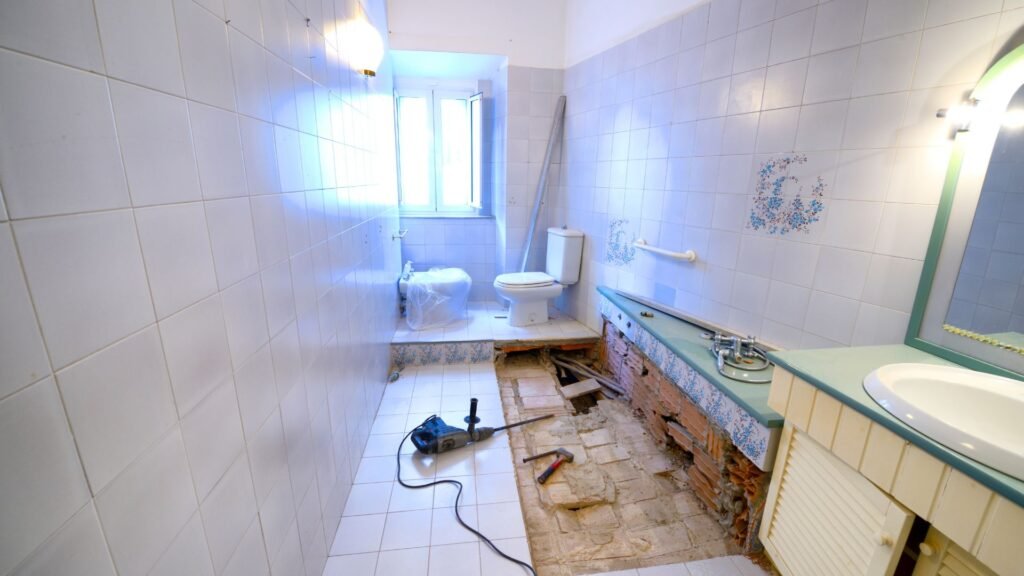
Budget-Saving Tips For Bathroom Renovations In NZ
Renovating a bathroom can quickly become expensive, but there are practical ways to save money without compromising on quality. Careful planning and smart choices allow you to achieve a stylish and functional bathroom while keeping costs under control. Here are proven tips to stretch your budget during a bathroom renovation in New Zealand:
- Reuse existing layout to save on plumbing costs: Moving plumbing lines for sinks, toilets, or showers is one of the most expensive parts of a bathroom renovation. By keeping your fixtures in the same positions, you avoid costly re-piping and drainage changes. This approach allows you to spend more on visible upgrades like tiles, vanities, and fittings rather than hidden plumbing work.
- Mix high-end fixtures with affordable fittings: You do not need to purchase every item from a premium range. Instead, invest in one or two standout features such as a designer vanity, a rainfall showerhead, or a feature tile wall. Pair these with affordable fittings like standard taps, shelving, or mirrors. This mix creates a balanced look that feels high-end without blowing your budget.
- Buy during sales or clearance events: Many bathroom suppliers in NZ offer seasonal discounts, clearance events, or package deals. Shopping during these periods can help you secure quality fixtures at a fraction of the regular price. Planning ahead and being flexible with product availability can save you thousands of dollars across your renovation.
- DIY small cosmetic updates (painting, mirrors, shelving): Not every task requires a professional. Simple updates such as painting walls, hanging mirrors, or installing open shelving can be done yourself with basic tools. These cosmetic upgrades refresh the look of your bathroom and reduce labor costs, leaving more room in your budget for essential professional work like waterproofing or electrical installations.
A bathroom renovation in NZ does not have to drain your savings. By reusing layouts, shopping smart, and tackling small DIY tasks, you can create a beautiful bathroom that balances style and affordability. Careful decisions now will help you enjoy your new space without financial stress later.
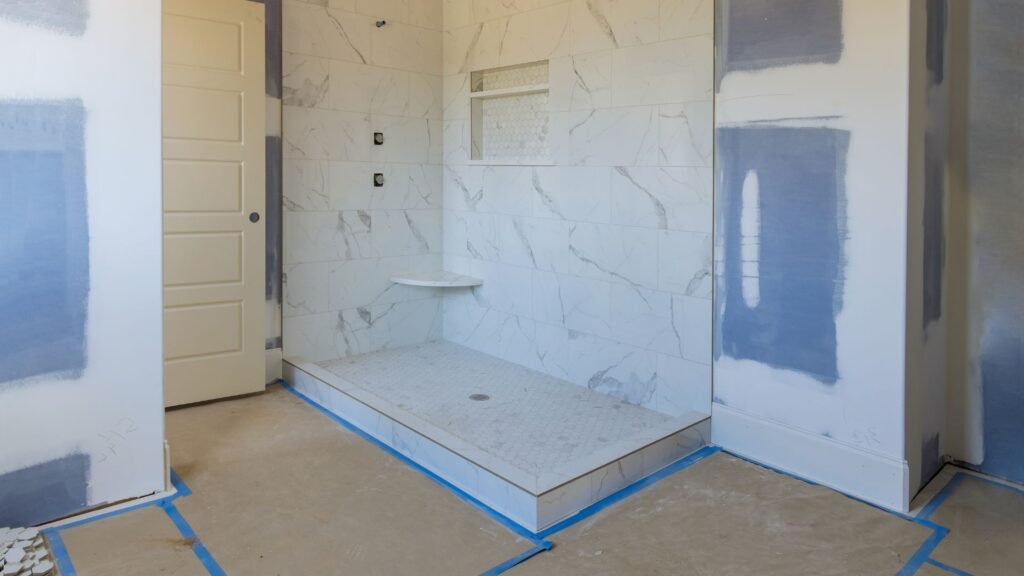
Add The Final Touches
Lighting And Ventilation
Good lighting can transform the look and feel of your bathroom. Natural light is ideal, so if possible, add a skylight or larger window to brighten the space. For artificial lighting, combine task lighting around the mirror with ambient ceiling lights to create a balanced atmosphere. Ventilation is just as important. A strong extractor fan prevents moisture build-up, reduces mould growth, and protects your finishes over time. In New Zealand’s damp climate, ventilation is a must for a long-lasting renovation.
Mirrors And Storage Hacks
Mirrors make bathrooms feel larger and more open, while also being functional. Consider installing a large wall mirror above the vanity or mirrored cabinets that double as storage. Storage hacks, like floating shelves, recessed wall niches, or vanity drawers, help keep the bathroom tidy without crowding the space. Smart storage is essential for both small and large bathrooms to keep essentials organized.
Plants And Décor For A Homely Feel
Adding greenery gives the bathroom a fresh and welcoming touch. Choose low-maintenance plants that thrive in humid conditions, such as ferns, peace lilies, or snake plants. Small décor items like woven baskets, wooden accents, or neatly folded towels can also add warmth without overwhelming the room. The goal is to make the bathroom not only functional but also inviting.
Safety Considerations: Non-Slip Flooring, Grab Rails For Elderly Households
Safety should always be a priority. Non-slip flooring reduces the risk of accidents, especially in wet areas. For elderly family members or anyone with mobility challenges, grab rails around the shower or near the toilet provide extra support and peace of mind. Investing in these features ensures that the bathroom remains safe and accessible for everyone in the household.
Final touches may seem small, but they are what turn a standard bathroom into a comfortable, practical, and safe space. By paying attention to lighting, ventilation, décor, and safety, you complete your renovation with details that make a lasting impact.
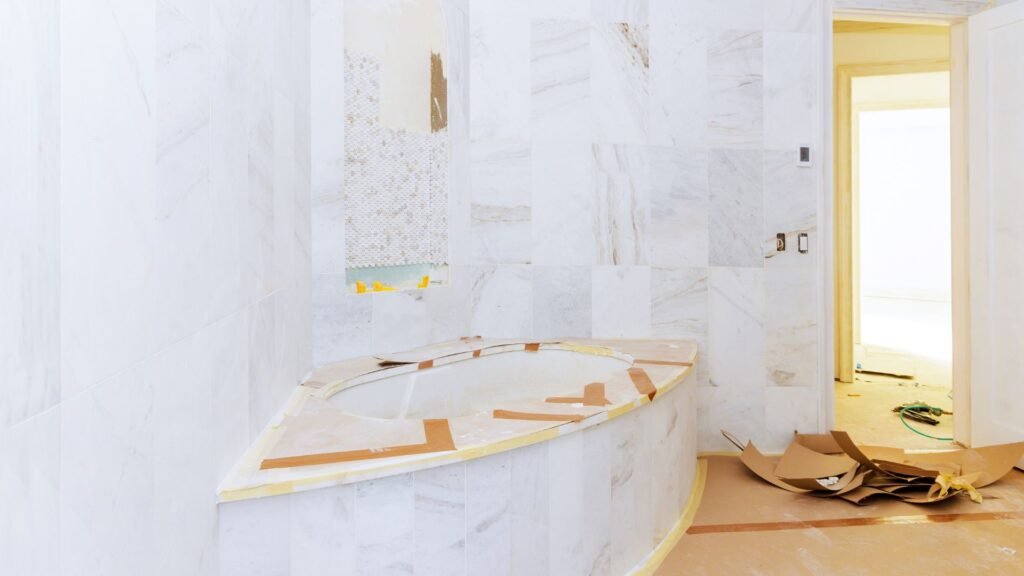
Common Mistakes To Avoid
Underestimating Budget
One of the biggest mistakes homeowners make when renovating a bathroom in NZ is underestimating the total cost. It’s easy to focus only on the visible items like tiles, vanities, and tapware, but hidden expenses such as plumbing upgrades, waterproofing, council consents, and unexpected repairs can quickly push the budget higher. A smart approach is to set aside at least 10–15% of your budget for contingencies. This buffer ensures you won’t be caught off guard by surprise costs and allows you to complete the project without cutting corners.
Poor Ventilation = Mould Issues
Bathrooms are naturally humid, and without proper ventilation, moisture builds up and creates the perfect environment for mould and mildew. In NZ, this is especially important due to the damp climate. Poor ventilation not only damages paint, grout, and cabinetry but also poses health risks for your family. Installing an effective extractor fan and ensuring adequate airflow will help prevent mould growth and extend the life of your renovation. Pairing ventilation with moisture-resistant materials such as tiles and waterproof paint adds another layer of protection.
Choosing Style Over Function
While it’s tempting to design a bathroom that looks like a luxury showroom, prioritizing style without considering functionality often leads to frustration later. For example, choosing a freestanding bathtub in a small bathroom may look great but could reduce usable space. Similarly, opting for fashionable fixtures that don’t meet your household’s daily needs may result in higher maintenance or replacement costs. A successful renovation balances style with practicality, creating a space that looks modern while still being comfortable and functional for everyday use.
Hiring Unlicensed Tradies
Another common mistake is hiring unlicensed or unqualified tradespeople to cut costs. While this may seem like a way to save money, it can lead to major issues with compliance, safety, and workmanship. In NZ, plumbing and electrical work must be done by licensed professionals. Hiring unqualified workers risks failed inspections, legal problems, and expensive rework if something goes wrong. Always check credentials, reviews, and references before signing a contract, and make sure all work complies with NZ building codes and standards.
Avoiding these common mistakes will save you stress, time, and money while ensuring your bathroom renovation in NZ delivers long-term value. By budgeting realistically, maintaining proper ventilation, balancing style with function, and hiring licensed professionals, you can achieve a bathroom that’s both beautiful and practical.
Ready to start your bathroom renovation journey? Visit Bathroom Renovations Wellington to explore how we can help turn your ideas into a stunning, functional space.
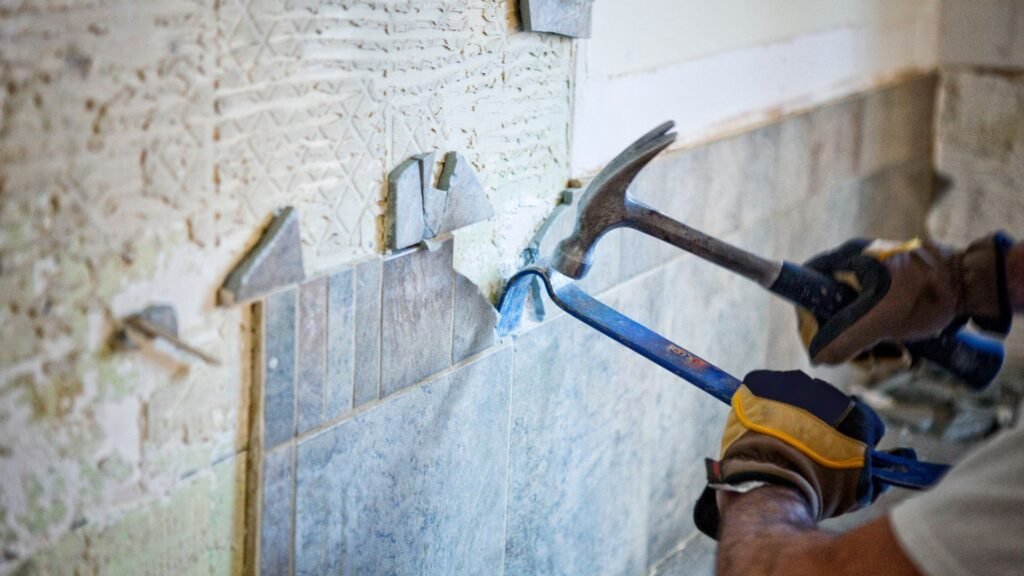
FAQs: About How To Renovate A Bathroom In NZ
How much does it cost to renovate a bathroom in NZ?
The cost of a bathroom renovation in NZ typically ranges from $15,000 to $30,000. The final price depends on factors like bathroom size, the quality of fixtures, plumbing requirements, and whether you hire professionals or do parts of it yourself.
Do I need council consent to renovate my bathroom in NZ?
You may need council consent if your renovation involves changes to plumbing, drainage, or structural elements. Cosmetic updates like painting or replacing vanities usually don’t require consent. Always check with your local council before starting.
How long does a bathroom renovation take in NZ?
A standard bathroom renovation in NZ takes around 4 to 6 weeks. The timeline may vary depending on the scope of work, availability of tradespeople, and whether unexpected issues arise during construction.
Can I renovate my bathroom myself in NZ?
You can do some DIY work like painting, installing shelving, or adding mirrors. However, plumbing and electrical work must be carried out by licensed professionals in NZ for safety and compliance with regulations.
What are the most common bathroom renovation mistakes?
Common mistakes include underestimating the budget, ignoring ventilation, choosing style over function, and hiring unlicensed tradespeople. These errors often lead to higher costs and long-term maintenance issues.
How can I save money on a bathroom renovation in NZ?
You can save money by keeping the existing layout, mixing high-end items with affordable fittings, shopping during sales, and tackling small DIY jobs like painting. Reusing fixtures in good condition can also reduce costs.
What are the current bathroom design trends in NZ?
Popular bathroom design trends in NZ include minimalist layouts, walk-in showers, floating vanities, natural stone finishes, matte black tapware, and eco-friendly fixtures like low-flow taps and dual-flush toilets.
Do bathroom renovations increase home value in NZ?
Yes, bathroom renovations often add value to a property. Buyers are drawn to modern, functional bathrooms, and a well-done renovation can boost resale value and appeal.
What’s included in a full bathroom renovation?
A full bathroom renovation usually involves demolition, plumbing and electrical work, waterproofing, tiling, installing new fixtures like vanities and showers, and finishing touches such as lighting, mirrors, and décor.
How do I choose the right tradespeople for a bathroom renovation in NZ?
Always look for licensed and registered plumbers, electricians, and builders. Check reviews, ask for references, and compare multiple quotes before hiring. Choosing experienced professionals helps avoid costly mistakes.
Conclusion
Renovating a bathroom in NZ is an achievable project when you approach it with the right preparation, clear budgeting, and a well-thought-out design vision. While it may seem overwhelming at first, breaking the process down into manageable steps, such as understanding costs, securing permits, hiring licensed professionals, and choosing durable fixtures, makes the renovation far more straightforward. Whether you are aiming for a simple upgrade or a full transformation, starting with a realistic budget and design plan will keep the project on track and reduce unexpected surprises. To make the process even smoother, consider reaching out to local renovation experts who understand NZ building standards and can provide reliable advice and accurate quotes tailored to your needs. Taking the time to plan properly ensures not only a functional and stylish bathroom but also a renovation that adds long-term value to your home.
About the Author:
Mike Veail is a recognized digital marketing expert with over 6 years of experience in helping tradespeople and small businesses thrive online. A former quantity surveyor, Mike combines deep industry knowledge with hands-on expertise in SEO and Google Ads. His marketing strategies are tailored to the specific needs of the trades sector, helping businesses increase visibility and generate more leads through proven, ethical methods.
Mike has successfully partnered with numerous companies, establishing a track record of delivering measurable results. His work has been featured across various platforms that showcase his expertise in lead generation and online marketing for the trades sector.
Learn more about Mike's experience and services at https://theleadguy.online or follow him on social media:

